
Needless to say, 2020 didn’t exactly turn out as planned. The pandemic affected us on every level, whether that’s in the way we communicate with clients or conduct user research. COVID-19 massively accelerated trends that we were already seeing—it packed a decade of ecommerce growth into a single year. Homebound consumers dramatically changed their shopping behavior, and millions of businesses were forced to invest more heavily in their existing ecommerce channels or go online for the first time.
Demand is continuing to shift, and ecommerce is expected to reach a staggering five trillion dollars USD) in sales in 2021 according to the BCG Consumer Sentiment survey. Brands now urgently need to adapt if they want to survive and set themselves apart from the competition.
As a front end app developer, you are in a unique position to help merchants succeed and thrive during these changing times. In this article, we look at the biggest trends in online shopping, and ask leading Shopify and customer experience experts to predict the essential ecommerce strategies and development techniques of the next 12 months. Keep them in mind when working on your current or next app or online store, and you’ll be more prepared for what merchants need in 2021.
1. Improve online purchase paths
Alex O’Byrne, cofounder of Shopify Plus agency We Make Websites, believes that as a result of the pandemic, websites have become the primary purchase path for many brands—rather than a secondary or alternative method to in-store.
“COVID-19 has brought forward the adoption of ecommerce by years. That means we need to be doing much better as an industry than at the start of 2020,” O’Byrne explains. “Ecommerce is extremely competitive. The best technologies will temporarily draw higher conversions until they are widespread and something else becomes an advantage.”
Ecommerce is extremely competitive. The best technologies will temporarily draw higher conversions until they are widespread and something else becomes an advantage.
O’Byrne therefore advises that ecommerce businesses need to offer more than the major ecommerce powerhouses to set themselves apart and recommends focusing on the following this year:
- Robust search and filtering using services like Klevu, Algolia, and Searchspring.
- Personalization applied properly. Ideally at each contact point (on pages, in search, in cart/checkout, marketing emails), and done as unobtrusively as possible.
- Enriched purchase information. For example: improved size guides, instant chat, and try-ons/augmented reality.
- Almost instant site speed loading with better development practices and headless adoption.
- Streamlined returns and exchanges as order volume in the home is now higher.
- For stores that have a brick and mortar presence, endless aisle concepts, pick up in-store, and unified inventory management.
- Nailing fulfillment at higher volumes will be crucial. “Our shipments are delayed due to COVID” isn’t going to work when the competition is solidly back on next-day delivery.
- Increased consumer altruism. Non-monetary rewards for behaviors (e.g. carbon neutral delivery, registering to vote, and donations to charity).
For all of these areas, plenty of services exist in the Shopify ecosystem that enable you to improve the service or app you offer without the need for much time and resources. We’ll look at some of them in more detail in this article.
2. Conduct rapid customer research
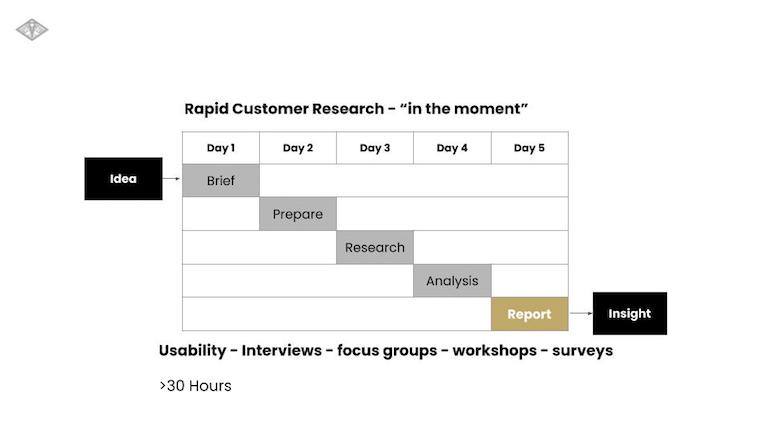
Steve Borges, cofounder of experience design agency Biglight, believes retailers seeking to keep pace with constantly changing customer needs, behaviors, and preferences will increasingly turn to rapid customer research to accelerate innovation.
“Retailers are operating in an environment where change is the only constant,” he points out. “That means innovation in the realm of customer experience is going to be more important than ever. But brands must also adapt with a surefooted focus on customer needs, which means embedding customer research throughout the process—from concept to design.”
What’s more, Borges says, far from slowing down innovation, carrying out rapid customer research to shape and validate everything from big transformational ideas to tweaks and optimisations brings the clarity and certainty merchants need to adapt quickly.
“It’s now possible to run meaningful customer research—remotely or otherwise—in days rather than weeks, because it doesn’t need to be based on anything approaching a final design or treatment. Even sketched out concepts, as part of intelligently designed research, can tell us what is likely to work in this new reality and what isn’t, what issues might emerge later, the tweaks and optimizations that are likely to enhance performance, or remove friction from the customer experience.
“This year, we’ve seen a number of global brands putting rapid customer research at the heart of experience innovation. The alternative—to press on without any customer evidence—is a much less certain approach, and, if there is one thing we all need at the moment, it is a little more certainty.”
You might also like: 12 Ways to Get the Most Out of Remote User Research During and Beyond COVID-19.
3. Bring in-store experiences online
Gavin Ballard, founder and CEO of Shopify Plus partner agency Disco, predicts that, as a result of COVID-19, merchants will find more inventive ways of bridging the gap between in-person and digital retail experiences, while at the same time, customers will be more open to new ways of searching for, comparing, and purchasing products.
Specifically, Ballard is seeing advancements in augmented and virtual reality (AR/VR) and the online services that are being offered to customers.
Augmented and virtual reality

While it's not quite the same as seeing a product in real life, Ballard says that AR/VR experiences help give customers the insight needed to make a purchasing decision.
Shopify Plus merchant The Sheet Society has embraced this with their AR-enabled Bed Builder, allowing customers to visualize how their linen will look in their actual room before adding it to their cart. This gives customers confidence in their decision (nudging up conversion rates), while also reducing The Sheet Society's risk of bearing the cost of a return.
Virtual services
One of the advantages of in-person retail is being able to forge a direct, personal connection with a potential customer in the store. Many merchants look to provide that online with services like 1:1 live chat. But, over the last few months, Ballard has seen some businesses go the extra mile.
Designer furniture retailer Brosa, for example, has shifted to offering a full showroom experience with tours and consults via video call. Even car dealerships—businesses that typically thrive on in-person sales—have started adapting to offer a more complete and compelling online experience.
4. Integrate more personalization and loyalty programs into omnichannel marketing
Deb Mecca, founder of boutique Shopify marketing and development agency Causeway 305, witnessed personalization and loyalty offers to be at the center of omnichannel marketing over the last 12 months and believes it will continue into 2021.
“It means that brands can collect cross-channel data by offering buyers a way to purchase products more frequently, more conveniently, and refer to their networks seamlessly,” she points out.
Before the pandemic, some loyalty programs only rewarded loyalty in the physical store. In 2021, it's an automatic and expected experience to buy something in a store, and receive a thank you text or email instantly, recognizing the purchase with extended offers and referral opportunities from every size of ecommerce business. According to Mecca, this experience contributes to building a deeper connection with the customer, meeting them where they want to shop with the value available no matter what.
Mecca also predicts that brands will increasingly test cross-channel initiatives to see if offers are working in concert or if the buyer expects one-channel communication to drive sales.
“For instance, a brand that identifies a customer that just purchased products in-store can offer a discount for a specific collection of products online based on the user's purchase history,” she explains. “Or, they can send referral marketing opportunities to their audience for in-store incentives.”
The data collection and omnichannel marketing strategies are becoming endless for your average store that has a physical location and an online store. The more brands fully realize the potential of data across online and offline avenues, and personalize it, the easier it is going to be to build customer loyalty and advocacy.”
5. Connect using social commerce
The future of retail is retail everywhere. Successful stores sell across any platform and channel, and connect with customers where they are spending most of their time.
Alli Burg, Shopify strategic partnerships manager, for example, has seen merchants get creative with how they engage with customers due to the pandemic. She believes more ecommerce will take place on social media platforms.
“In 2020, we heard big announcements about Shopify developing deeper integrations with Google, Facebook, and most recently TikTok, and the idea of social commerce will be an exciting space to watch as these platforms continue to collaborate,” Burg predicts.
Facebook Shops, for instance, enables brands to create a customized online storefront allowing their customers to find, browse, and buy products through the Instagram and Facebook apps, with checkout powered by Shopify.
Instagram, meanwhile, has been rolling out a live shopping experience that enables businesses to show off products in a live video, while customers can browse the highlighted products and make purchases.

You might also like: The 10 Most Useful Browser Dev Tools for Front End Developers.
6. Rethink marketplaces
Ross Beyeler, chief operating officer of Trellis Commerce, agrees that marketplaces, such as social ones, will play a much bigger role in a brand’s overall strategy.
“Looking back to the origins of ecommerce, merchants were often forced to make their entrance online through already established marketplaces such as Amazon or eBay,” he explains. “While platforms like Shopify have empowered merchants to create and manage their own direct-to-consumer experiences, the shape of these marketplaces continues to evolve.”
In 2021, Beyeler predicts merchants will rethink how they can use marketplaces as a backbone in their expansion across the following categories.
Native platform apps
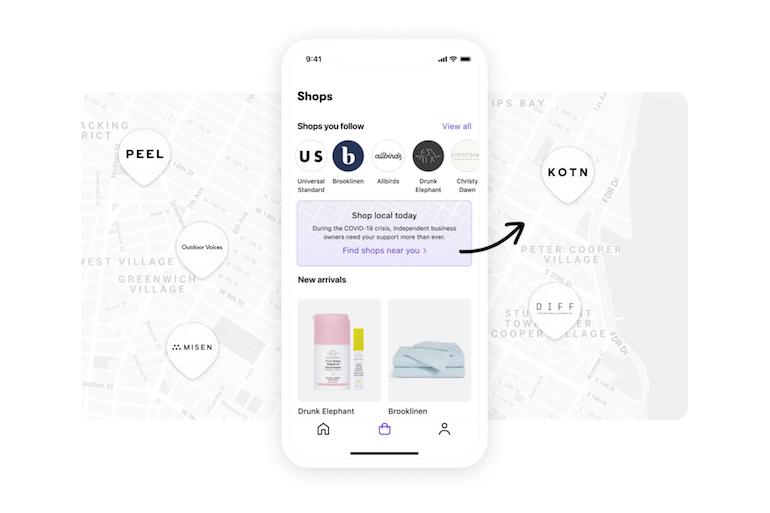
What originated as a simple way for customers to track their order status, Shopify’s Shop app has evolved into a tool for merchants to directly recommend and sell products to customers right through the app.
This post-purchase extension of customer interaction provides an opportunity for brands to stay engaged and offer better-targeted products and services. Customers have the ability to “follow” brands that they love and are provided a feed of products they’re interested in. While still young, Shopify is very likely to continue expanding Shop’s capabilities and create a rich marketplace of brands personalized to the individual customer.
Big box marketplaces
Despite a massive rise in independent ecommerce brands, the traditional “big box” ecommerce marketplaces aren’t slowing down. In fact, Walmart has aimed its site on being a direct alternative to Amazon’s seller services and now supports the ability for merchants to sell directly through their platform. This provides a huge opportunity for brands to tap into Walmart’s massive reach, accelerated by pre-built integrations such as Shopify’s Walmart sales channel.
Editorial-focused marketplaces
Editorial marketplaces such as Gear Patrol have carved out a niche in the intersection of curated products, brand collaborations, and highly-editorialized product content. As they’ve moved from a product-focused blog to a complete marketplace built on Shopify, they’ve opened the door for other brands to reach their readers in unique collaborations and promotions.
Delivery apps
The onset of COVID-19 accelerated the adoption of delivery apps as a primary source for groceries and takeout. As consumers became accustomed to purchasing through mobile and expecting local delivery, we’ve seen an expansion from food and groceries into a wide array of products. Merchants should consider exploring third-party local delivery partners or potentially configuring their own local delivery with apps such as Shopify Local Delivery that provide an entirely self-managed option to retailers.
7. Diversify payment options
Senior ecommerce consultant Kurt Elster, host of The Unofficial Shopify Podcast, thinks we will see more payment options than ever before offered by merchants in 2021.
“Digital wallets like Apple Pay will be the default payment method, possibly overtaking credit card payments for the first time,” he predicts. “Financing solutions will become a must-have feature with more aggressive merchants running multiple financing options. We'll also see cryptocurrency finally legitimized as a payment method suitable for more than just the dark web.”
Elster acknowledges that his views are US-centric and that these trends will look different globally. One thing will remain the same, however: ecommerce will explode worldwide, and transactions will occur in more ways than ever.
“It feels like we've been talking about mobile overtaking desktop for a decade, yet the number of sites accepting more than just a credit card is still frustratingly low,” he sighs. “For convenience's sake, I hope 2021 is the year we collectively agree as ecommerce professionals to let customers pay how they want, when they want, on whatever device they want. We're now closer to the year 2050 than 1990. It's time our online transactions reflected that.”
I hope 2021 is the year we collectively agree as ecommerce professionals to let customers pay how they want, when they want, on whatever device they want.
8. Value ethical ecommerce
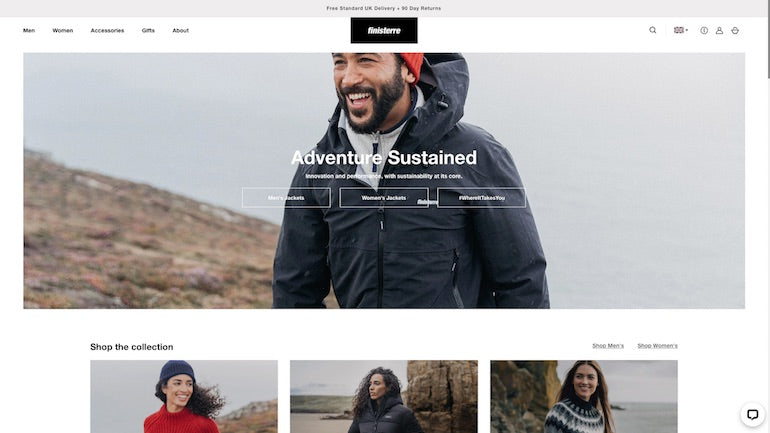
As Alli Burg points out, in 2020, the concept of the conscious consumer emerged with 57 percent of shoppers willing to change their purchasing habits to help reduce negative environmental impact (according to a recent IBM retail report). Consumers are now actively seeking out local and independent businesses that reflect their values.
For 2021, Krissie Claire, founder of Kollectify, an agency that specializes in content marketing for Shopify solutions, and the MindfulCommerce Community and Directory, predicts that most online stores will have the option to offset the carbon footprint of a purchase. She also thinks more ecommerce brands and developers will wake up to their digital carbon footprint.
“Shopify is doing incredible things to help combat the carbon crisis and deforestation,” Claire explains. “With the current state of the world, most of us are recognizing the need to protect ourselves and the planet more than ever. The swelling rate of overconsumption damages our health, environment, and planet, and ecommerce is feeding this unprecedented problem.”
With the current state of the world, most of us are recognizing the need to protect ourselves and the planet more than ever.
Claire has seen that more customers now purchase with more purpose. There’s a huge growth in the number of small- to medium-sized ethical and sustainable brands, and customers are looking for brands who are honest and transparent about what they’re doing to help fight the carbon crisis.
To lower the digital carbon footprint of an online store or app, Claire recommends the following:
- Hosting: Your data center must run on renewable energy. Demand transparency and settle for nothing less. Explore your options on this blog post by WordPress agency Wholegrain Digital if you need hosting.
- Optimize: This is good for overall app or pagespeed, as well as the planet. This relates to images (compress and upload at correct scale) as well as fonts (again, compress and stick to modern formats—check out this deep dive on the performance of web fonts).
- Aim for efficiency in your UX: Design user journeys that bring your customers swiftly and safely through the purchase process—no excess energy needs to be expended and everyone wins.
- Embrace digital minimalism: Carefully consider your use of large images, and especially video files. What’s really needed to achieve the effect or response that you’re looking for?
- Keep it clean: Embrace the challenge of simple, efficient code in all areas of your site or app—weed out duplications and unnecessary plugins.
Whether you optimize an app or ecommerce site in 2021, carefully consider your options to ensure you build them on green foundations and stick to sustainable values.
9. Develop creative advertising strategies
Fran Boyd, art director at Shopify Plus agency Underwaterpistol, has seen a lot more 3D and CGI being used in adverts in 2020, particularly in the beauty industry, and believes this trend will continue in the new year.
“It's a great option for product advertising,” she points out. “Often, it not only proves more cost-effective than traditional campaign shoots, you may also save time arranging everything from the schedules of actors and staff, to finding the right film set (while following all safety guidelines with respect to COVID-19 and physical distancing). With CGI animations, it’s easier to edit the final result in different ways, too. Finally, with COVID-19 restrictions making it difficult for crews to meet up, CGI projects are a lot smoother to organize.”
Boyd also noticed brands adding a personal level to pop-up events by creating limited-edition filters for Instagram or Snapchat. As the pandemic put physical events on hold, however, an alternative for the next few months could be an art installation.
“Last spring, Ciaté London promoted their new makeup range by projecting a large smiley face onto the Houses of Parliament in London and the Brooklyn Bridge in New York,” Boyd explains. “It made people smile at a tricky time, and consumers appreciate brands that are thinking outside the box right now.”

10. Pay attention to headless commerce
Kelly Vaughn, founder of full-service Shopify agency The Taproom, thinks that this year we’ll be seeing more and more merchants opt for a headless architecture, decoupling the backend of an ecommerce store from the customer-facing end, which provides merchants with a blank slate to build a new storefront with any choice of content management system.
“By going headless, merchants will be able to use Shopify to continue powering transactions and handling their product management,” Vaughn explains. “This is becoming more common with mid-sized and enterprise businesses looking to gain more control over their site as a whole."
Vaughn points out that developers love the headless commerce approach because they get to utilize a modern tech stack with JavaScript libraries such as React and Vue.js, and even see a significant performance boost by turning the storefront into a progressive web app. Services like Nacelle and Shogun Frontend entirely handle the API data layer for you, so you can focus on building a unique, performant storefront experience.
Going headless does have its drawbacks, however. Vaughn cautions that merchants won’t be using the Shopify theme customizer anymore and will need to learn the inner workings of a new content management system such as Contentful, Prismic, or Builder. They will also lose the ability to use certain Shopify apps if they don’t have an API to integrate into a headless storefront. Finally, this approach also requires more time-intensive developer resources to build and maintain the storefront.
Make an extra effort to help your clients and users in 2021
In 2021, merchants can no longer dictate how and where customers make a purchase or risk being left behind. More than ever, brands will need to adapt and communicate with their customers no matter what channels and payment methods they use.
Developers need to be ready for this shift, so they can go the extra mile for their clients and app users to meet their fast-changing needs. By being aware of the ecommerce trends covered in this article, you ensure you can help them rethink how they sell to their customers and build better experiences for them. Make your sites and apps as fast as possible, choose the best technology stack for your projects, and be all set to tap into new marketplaces.
What trends do you think will change ecommerce in 2021? Share your thoughts in the comments below.
Our 2020 predictions
Ecommerce around the world is on the rise at a steady pace. It’s now accounting for more than three quarters of overall retail growth, and global sales are predicted to reach a mind boggling $3.9 trillion USD in 2020. Some markets—such as India and Indonesia—are growing especially fast, and 42 percent of the world’s ecommerce transactions now happen in China, while the majority of online shoppers everywhere also make purchases from overseas retailers.
Amazon remains dominant, and in May 2019 surpassed Walmart as the world’s largest retailer. Cracks are appearing in its reign, however, and major brands—such as Nike—have started abandoning the platform. Though still a major challenge, in 2020 brands will find new ways to compete with the ecommerce giant.
All these statistics are reflected in the trends that will define online shopping in 2020. We asked leading ecommerce experts and Shopify Partners for their thoughts on what designers and developers should focus on over the next 12 months. Follow their advice, and you’ll help your clients stand out and boost their sales in the new year.
We've also included our ecommerce predications from 2019 at the bottom of this article, so you can see how the years compare, and how our predictions turned out. Skip ahead to read them.
1. Default to international
Alex O’Byrne, co-founder of Shopify Plus agency We Make Websites, believes international will be essential for any ecommerce growth strategy in 2020.
“International markets are growing at a crazy pace, with projections that cross-border purchases will account for a fifth of all worldwide ecommerce by 2022,” he points out. “If your brand is expanding, and you haven’t honed your international strategy, it’s time to crank up the heat.”
If your brand is expanding, and you haven’t honed your international strategy, it’s time to crank up the heat.
Diving into new markets to sell internationally might be hard to get your head around, Alex admits, but the time-saving technology to help you go international has never been better.
“Let’s look at payments,” Alex suggests. “Shopify multi-currency allows you to instantly sell in ten different currencies. Want to get more local? With multi-store you can have a store per currency, targeting each region specifically. This proves particularly useful if you want to sell in multiple languages.” We Make Websites put together a comparison of multi-currency versus multi-store enumerating the features of each.
Charging tax is also getting simpler, especially when enhanced by Avalara, as are third party logistics for shipping. Often seen as one of the hardest parts of ecommerce, you now have the option of Shopify Fulfilment Network if you want to sell into the US.
Avalara automatically calculates sales tax on all Shopify Plus sales using geolocation to map multiple rates and rules to each transaction:
2. Commerce-enabled commuting
Ross Beyeler, founder of ecommerce consultancy Growth Spark, thinks that the car commute will soon emerge as another focus for brands.
“According to research conducted by AAA, American drivers spent 51 minutes driving approximately 31.5 miles each day, making an average of 2.2 driving trips,” Ross explains. “This is a highly captive audience that is often on the way to/from a buying opportunity. More importantly, they can be geo-located, allowing for highly targeted advertising.”
As a lot of commuters now use ride-sharing apps, they have the bandwidth to consume media and make purchasing decisions without having to focus on the road. Apps like Uber, Google Maps, and Waze take advantage of that by placing ads directly within their product. There are also opportunities for interaction, personalized advertising, and dynamic calls-to-action in podcasting apps and streaming music services such as Spotify.
“Even major automobile manufacturers such as GM, via their Marketplace offering, are finding ways to partner with brands to offer commerce-enabled experiences within their vehicles,” Ross reveals. “These sorts of in-car dashboards become even more powerful as driver-assisted and self-driving cars become more readily accessible, allowing drivers to do more than just navigate their commute.”
Couple this with voice-enabled commerce, which is continuing to expand, and drivers will be able to take advantage of a more seamless buying experience, for example asking Siri to purchase groceries prior to their arrival at the store.
“Soon the culmination of commerce channels paired with effortless commuting could lead to a whole new lane of growth for brands,” Ross predicts.
Soon the culmination of commerce channels paired with effortless commuting could lead to a whole new lane of growth for brands.
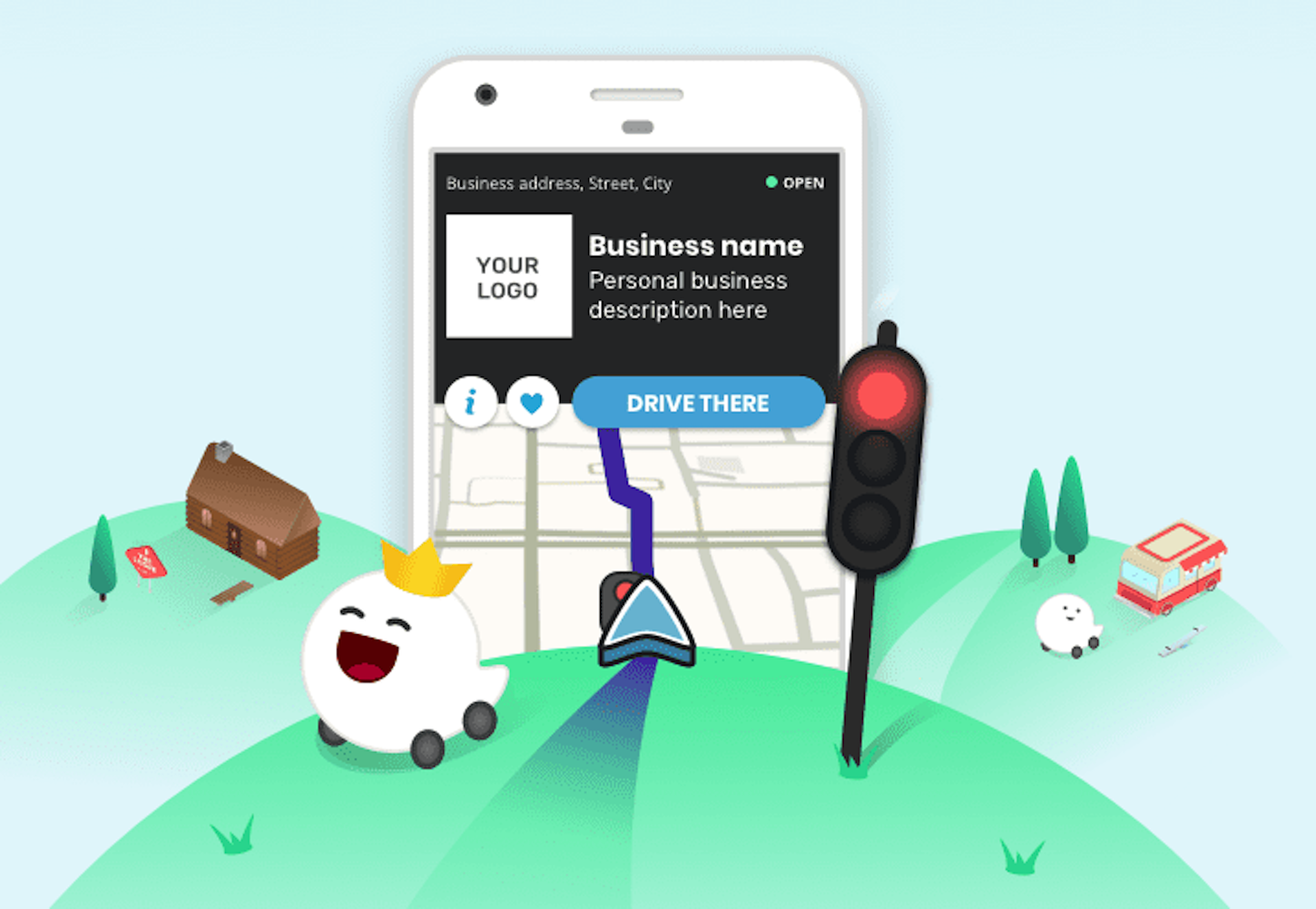
3. Going beyond the online store with omnichannel
There’s a continued appetite for consumers to engage directly with brands. But while retailers have focused on getting online for the last decade, they now realize that it’s all about people and places.
“Creating a brand that’s cross channel—or omnichannel—provides the opportunity to forge a deeper connection with the customer,” explains Dan Conboy, managing director of Shopify Plus agency Statement. “One which goes beyond clicks and allows consumers to interact with your team and products. This in turn can create a stronger sense of loyalty and advocacy—the ingredients that the most successful brands have on their side to drive sustainable growth.”
Creating a brand that’s cross channel—or omnichannel—provides the opportunity to forge a deeper connection with the customer.
High profile companies such as Gymshark and Kylie Cosmetics have successfully opened pop-up stores to bring their brands to life, generate a buzz, and tell their story. Shopify, meanwhile, recognized that commerce isn’t just about online by investing in tools like Shopify POS and, more recently, launching a retail education space in LA to train and empower entrepreneurs to create their own best-in-class retail experiences and stores. And larger brands, who may need more complexity in their physical retail store requirements, can now connect third-party EPOS solutions, such as LS One, into the Shopify platform.
Dan points out that having a unified customer view allows a brand to understand their buyers’ behavior across online and retail store channels, which can unlock a host of benefits such as:
- A store assistant being able to see a customer’s previous online orders to guide their next purchase
- Loyalty points being captured and shared across channels, rewarding customers in a unified and consistent manner and encouraging greater advocacy
- Attaching a digital customer profile to transactions in store, so follow-up emails can be initiated to drive further repeat orders online or in-store
- Collecting and analyzing data to understand how stores drive revenue online in specific geographic regions, which can inform a brand’s wider store strategy and where next to invest in a permanent store or experiment with a pop-up
So in 2020, developing a strong omnichannel strategy, which goes beyond the website and provides opportunities for customers to interact, will become a clear way to create a competitive advantage.
Take a step inside Kylie Jenner’s first ever pop-up shop, powered by Shopify:
4. Employ traditional storytelling techniques
As ad costs continue to rise, Kurt Elster, senior ecommerce consultant and host of The Unofficial Shopify Podcast, thinks small businesses will return to traditional storytelling strategies to set themselves apart.
“There's no doubt that any merchant advertising on Facebook in 2019 has noticed the steadily rising costs,” he points out. “Brands like BMW or Walmart have huge customer lifetime values, which allows them to spend significantly more on digital ads without having to worry about customer acquisition costs. But storytelling is the one thing that they struggle with. Savvy small businesses will have to overcome the rising costs by going back to basics and creating more compelling and personal brand experiences that large brands can't compete with.”
Savvy small businesses will have to overcome the rising costs by going back to basics and creating more compelling and personal brand experiences that large brands can't compete with.
If you haven’t included it in your strategy yet, Kurt advises that now more than ever is the time to learn video marketing, so you can connect with customers on social media.
Here Kurt demonstrates how Hoonigan, an apparel brand for auto enthusiasts, uses video:
5. Bespoke subscription programs
Ecommerce subscriptions have seen a 100 percent year-on-year growth over a five year period. This shift may seem obvious and straightforward for companies selling consumables like Dollar Shave Club, BirchBox, or Hello Fresh, but it’s a great opportunity for all ecommerce businesses to drive repeat purchases and increase the lifetime value of an acquired customer.
Gavin Ballard, founder and CEO of Shopify Plus partner agency Disco Labs, sees a couple of emerging trends that will be important to pay attention to in 2020.
The first is the rise of subscription-based revenue streams for businesses outside the “traditional” fast-moving consumer goods (FMCG) model.
“While consumers may not want or need high-end beauty products on a regular schedule,” Gavin explains, “brands like Sephora offer their customers paid-for membership subscriptions that give customers access to free shipping and exclusive products. Similarly, businesses that sell one-off items like exercise equipment—for example, iFit—are looking to augment their offerings to customers with ongoing membership programs, granting access to training and health resources.”
The second is the level of personalization and customization merchants are investing into their subscription offerings.
“It’s no longer good enough to simply bill and ship every month,” Gavin cautions. “Customers are demanding a flexible, robust system that offers them more value than just a product in a box. This includes things like automated product recommendations, rotating offers, the power to skip, pause, and cancel subscription items on a granular level, and frequency offers that make sense for the product and the customer’s lifestyle.”
Customers are demanding a flexible, robust system that offers them more value than just a product in a box.
The key to successfully capitalizing on these trends, Gavin recommends, is to avoid treating subscription as something that’s simply “bolted on” to an existing ecommerce offering, and instead treat it as a first-class sales channel and product offering. Spend a lot of care on designing the customer’s subscription experience, from the flows that encourage customers to sign up to the notifications they receive to the self-management experience, and you’ll be much better prepared to compete with Amazon and deal with increasing ad spends as well as decreasing ROIs on paid acquisition channels like Google, Facebook, and Instagram.

6. Tailor your store setup based on product price point
If the products in your client’s store are relatively inexpensive, widely available, require little to no decision-making, and/or are bought repeatedly by the same customer, then harnessing sales in the moment is key, recommends Sharon Austin, design director at Shopify themes design and development company Out of the Sandbox.
“Make the purchases as fast and easy as possible by optimizing the user checkout flow,” she advises. “A quick win is enabling the Dynamic Checkout Buttons in your theme, which allows the customer to get to the checkout with just a single click of a button. By providing multiple touchpoints for accessing the checkout, you can increase the chances of getting customers to purchase your product.”
By providing multiple touchpoints for accessing the checkout, you can increase the chances of getting customers to purchase your product.
For products at a higher price point that require extended decision-making and/or are purchased infrequently, Sharon suggests making sure you drive home the value of these items with detailed product pages that include video, 3D models, and testimonials. To seal the deal, offer additional payment options such as PayPal, Amazon Payments, or Apple Pay, which provides a more flexible, personalized checkout experience.
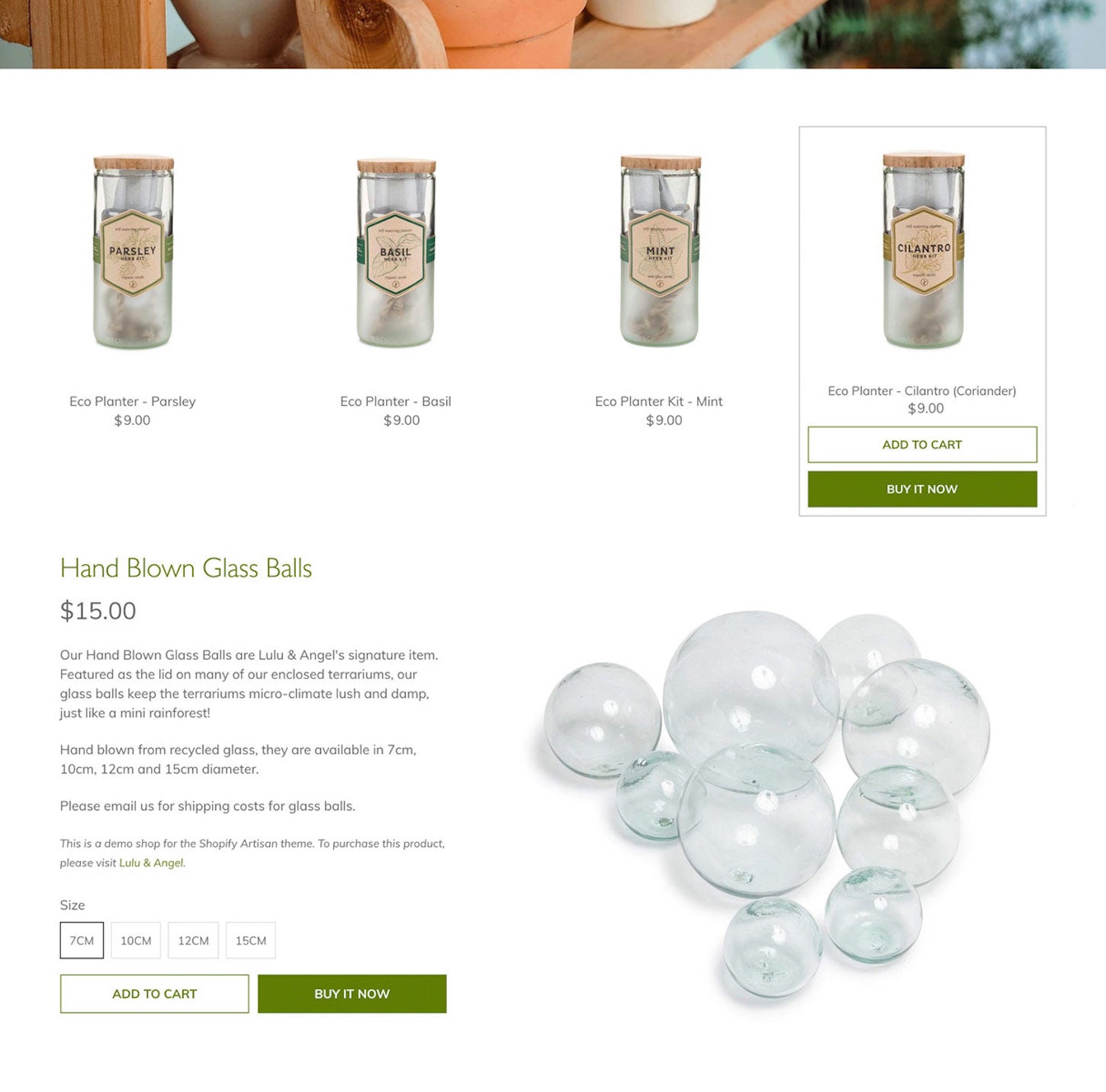
7. Prioritize accessibility
The recent Supreme Court case Domino’s Pizza v. Guillermo Robles is likely to have a huge impact on how ecommerce sites with brick and mortar stores approach accessibility, predicts Catherine Meade, developer at web design and development firm Sparkbox.
“The landmark decision determined that any company with a physical location must make their ‘website and other online platforms’ accessible under the Americans with Disabilities Act,” she explains. “The court case may have raised more questions than it answered, however, as most current U.S. laws under that act were not written with the web in mind.”
Catherine therefore expects to see a large number of ecommerce apps finally prioritizing accessibility updates in 2020, if only to play it safe against future lawsuits.
Additionally, if your team has the funds available to do so, there is nothing as valuable as user testing your app with someone who is a screenreader user.
“Brushing up on WCAG 2.1 is a no-brainer for anyone working with web UIs,” she recommends. “WCAG itself is not very digestible, but there are numerous tools available that break it down into simpler facts. Additionally, if your team has the funds available to do so, there is nothing as valuable as user testing your app with someone who is a screenreader user.”

8. Headless commerce
Some trends also affect the architecture of ecommerce experiences. One of them is headless commerce, the idea of decoupling the content management capabilities of an ecommerce solution with the front end presentation layer. It enables you to publish content and deploy it to any device—mobiles, wearables, displays, computers etc.
“You now have the freedom to select a front end framework that works best for your team, instead of being tethered to a monolith platform’s codebase,” points out Heidi Olsen, a senior front end engineer at startup Bumped. “It also allows your team to have complete control over the data architecture, so you can query the services you need, when you need them.”
For example, you can use a headless CMS for your content management and a different service for your payment processing and shipping.
“This approach can help mitigate the need for writing custom plugins to solve for strict technical requirements,” Heidi explains. “If at any point you need to integrate a new service or replace an older one, it does not require a complete rewrite of the system. There are also endless possibilities to customize the experience, including a custom checkout flow, personalized customer journeys, and the ability to roll out new products across multiple sites and platforms.”
There are also endless possibilities to customize the experience, including a custom checkout flow, personalized customer journeys, and the ability to roll out new products across multiple sites and platforms.
As headless enables you to use frameworks like React and more specifically static site generators such as Gatsby, John Surdakowski, founder and creative director at Shopify Plus agency Avex Designs, recommends developers brush up on their JavaScript skills and explore available platforms and their APIs.
“It’s a growing need, especially for medium- to enterprise-sized businesses,” he finds. “Developers can use the power of the Shopify Plus commerce engine, while having more control over the customer experience and their content, as well as URL structure, development environment, and functionality.”
Switching to a headless ecommerce approach over a monolith does have its drawbacks. Heidi cautions that not all headless content management systems have a robust WYSIWYG editor or allow you to preview content easily. Ensuring that you have technical resources to help build and support your site long-term is therefore crucial when moving to a decoupled approach.
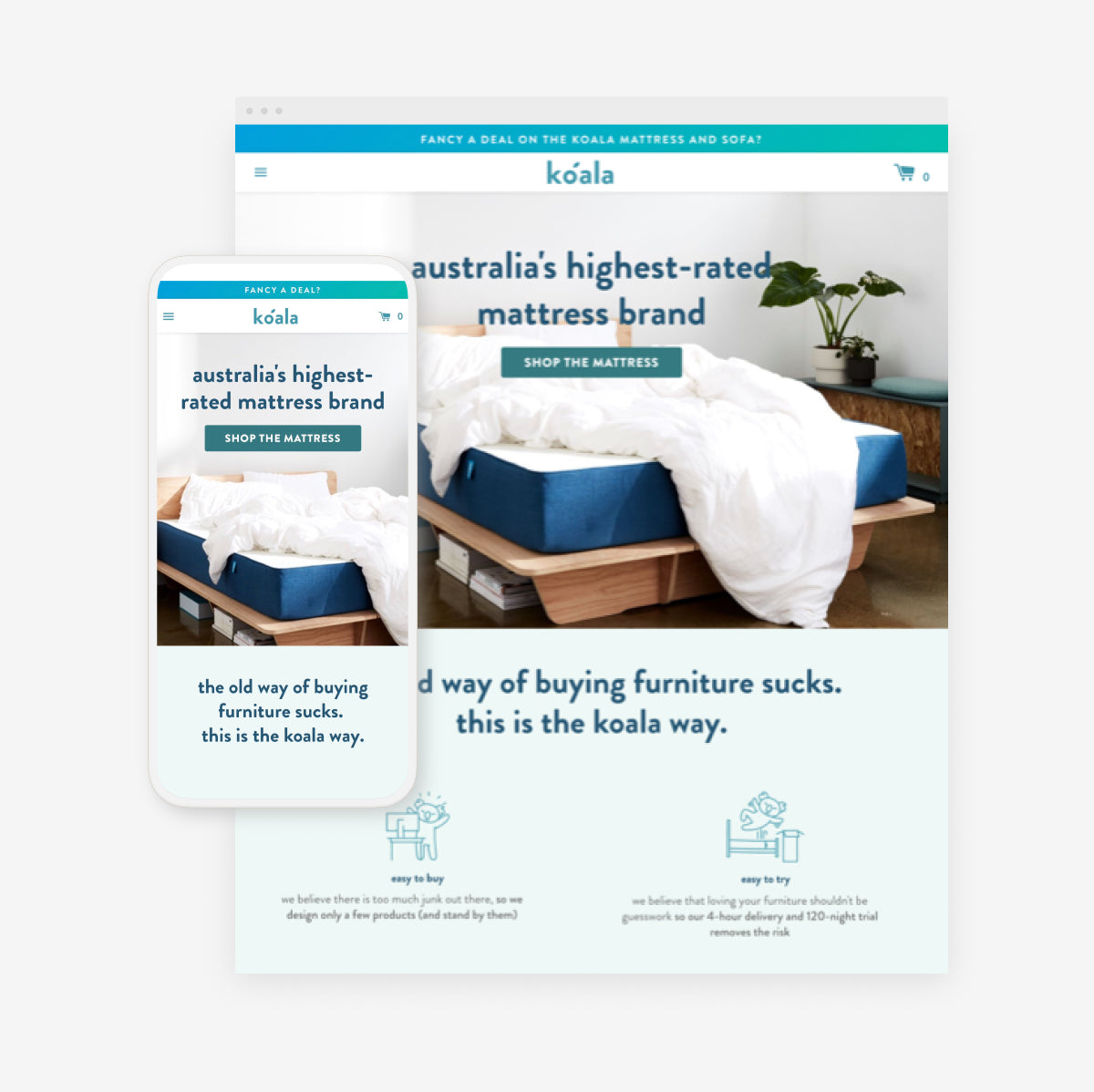
9. Progressive web apps
As headless commerce enables you to build a custom front end from scratch, many developers now choose the latest technologies available, such as progressive web apps (PWAs). Kelly Vaughn, founder of The Taproom Agency, expects to see a lot more ecommerce businesses, especially those with more complex content needs or those with specific ERP or CRM systems that need integrating, to pay more attention to this space in 2020.
“Shopify's continued expansion of the Storefront API has allowed developers to build a completely new storefront both easily and at a much lower cost than what we saw in recent history,” she explains. “With new PWA platforms such as Nacelle, a lot of the heavy lifting is done for you, so all you need to do is concentrate on the front end build.”
Kelly advises that the most important step when considering a PWA for a Shopify merchant is making sure it’s actually a good fit for them.
“PWAs might be the cool new thing to build, but they also require separate hosting to deploy the PWA,” she cautions. “Your development tech stack needs to expand beyond typical Liquid builds, as PWAs tend to be built with either React or Vue, and ongoing development work for maintaining the site will increase as you won't be using Shopify Sections to let merchants maintain the data themselves. All of these items are added costs for the merchant.”
Rothy’s, for example, a startup that is creating sustainable shoes made from recycled plastic water bottles, recently relaunched its mobile site as a PWA, because their audience is very mobile savvy. Kelly predicts that in 2020 a lot of Shopify stores will follow this approach.
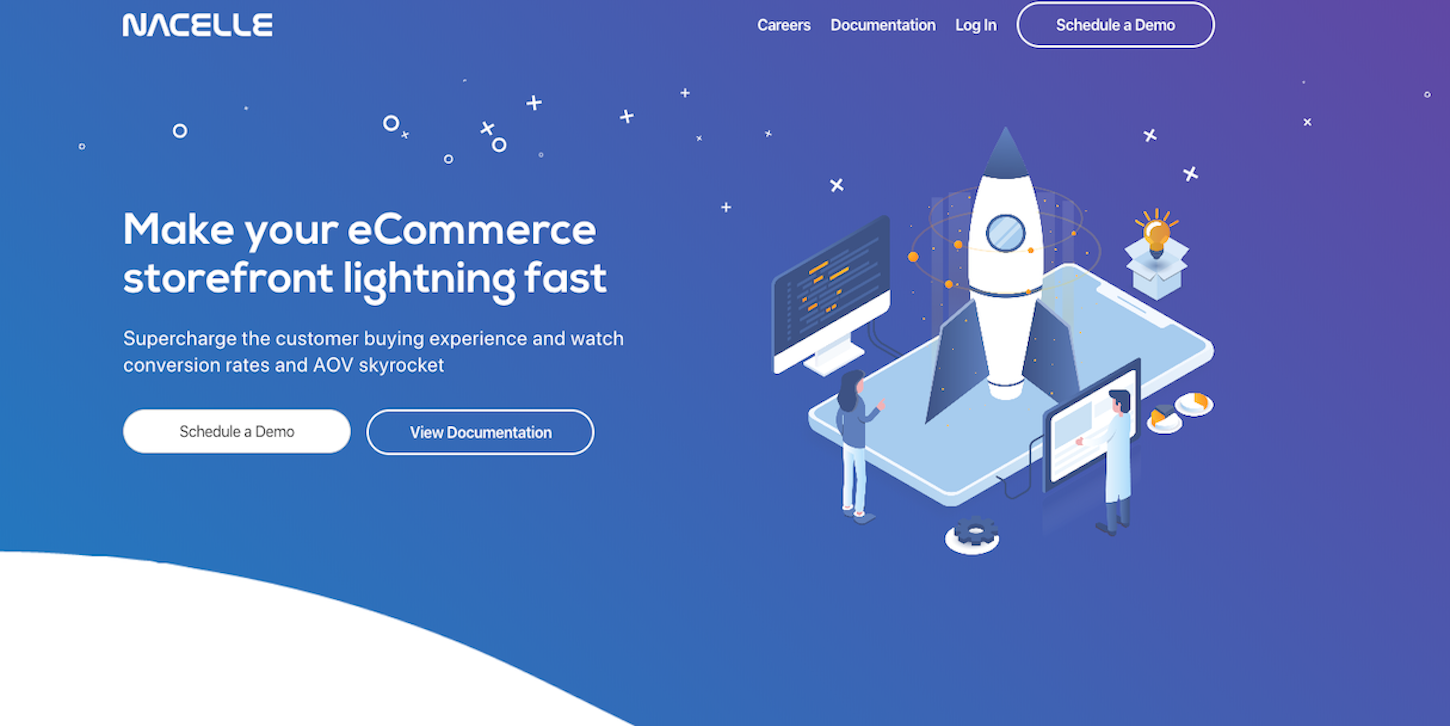
10. Optimize for the long term by building emotional connections
Haraldur Thorleifsson, founder and design director of full-service creative agency Ueno, hopes that ecommerce in 2020 will be less transactional and more focused on creating positive emotional connections.
I’d like us to build long term mutually beneficial relationships between brands and their customers rather than A/B testing everything to a place where how fast we can sell is the only metric.
“I’d like us to build long term mutually beneficial relationships between brands and their customers rather than A/B testing everything to a place where how fast we can sell is the only metric,” he cautions.
“I would like brands to optimize for the long term rather than the short term, and sometimes that will mean a slower sales cycle, but ultimately I strongly believe that is how you create a strong brand.”
Representation
For an example of how to build a strong, emotional, and positive connection with customers, Emily Moss, co-founder of Shopify experts Alt & Dot, suggests looking to global fashion retailer Universal Standard.
“They prioritize representation through their inclusive sizing, diversity of models, and ‘See It In Your Own Size’ product merchandizing,” Emily explains. “To further foster connection with their audience, their Fit Liberty program allows customers to swap garments for a new size should the purchasers’ size fluctuate within one year of purchase. These programs demonstrate a commitment to creating a lasting emotional connection with each customer as opposed to a one-off transaction.”
You might also like: Universal Design: 11 Practical Tips to Make Your Sites and Apps More Accessible.
Clear core values
Emily also advises to clearly define your core values (or stick to your client’s) to help avoid ‘shiny object syndrome’.
“When you know what’s important to you, you’re less likely to implement the latest ‘sales-boosting’ app or trendy growth tactic, which could damage the emotional connection with the customer,” she urges. “Building solutions that address your unique pain points and focus on your unique customer journey empower both your customer and your internal team, helping avoid misalignment as seen by some companies.”
Ethical and sustainable business practices
Finally, forward-looking ecommerce brands are embracing ethical and sustainable practices—for the environment, their company culture, their design and development processes, but more importantly, for stable company growth.
“Our client, slow fashion brand Elizabeth Suzann, for example, has slowed down to support continued growth,” Emily explains. “With their made-to-order model, a sharp contrast to the fast-fashion companies of the past decade, the company caps sales each week to ensure orders do not exceed production capacity, customers receive reasonable ship times, waste is limited, and their continued growth is sustainable.”
Focus on these three areas, and you’ll evoke a much deeper emotional connection with your client’s audience than the majority of their competition.
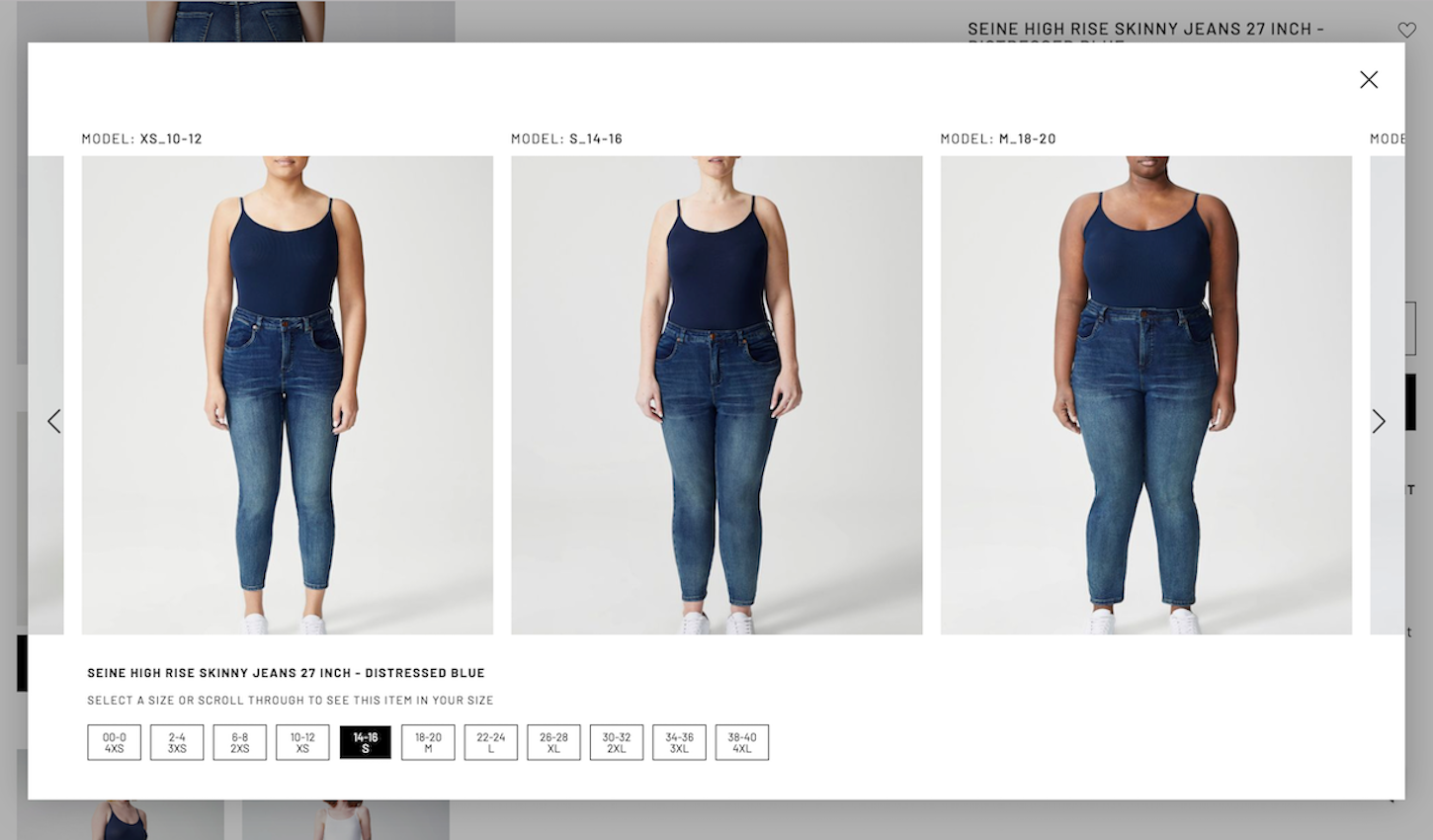
You might also like: ‘Emotional Ecommerce’ Increases Repeat Purchases 80%, Retention 58%.
Unique, tailored customer experiences are king
In 2020, it’s no longer enough to just get a store online. What counts among massive competition and rising costs is forging a real connection with customers across digital and physical channels.
Every strategy should put the customer first, whether that’s prioritizing accessibility from the start or focusing on unique subscription programs. Only if you offer a compelling experience that’s a bit different will you have the chance to really set your clients’ stores apart.
Also, as international is disrupting the way we think about commerce, ensure you pay special attention to reaching new markets and the many tools that help you go global.
Meanwhile, as omnichannel is approaching the mainstream, retailers will bridge the gap between online and in-person data collection to optimize the customer experience, make it more seamless, and increase conversions. And on the architecture side, developers now have the option to go with a headless approach and build progressive web apps.
Consider the trends covered in this article, choose the ones that make sense for your own projects, and you’ll delight customers and clients alike. In 2020, you’ll be better equipped than ever to make that happen.
Our 2019 Predictions
In 2019, we thought ecommerce would see an increase in the use of AR, personalization, multilingual products, and much more. Here are our 2019 predications, unedited from when we first published them last January.
1. Increased conversations with customers
User experience designer and consultant Sarah Doody believes that this year we will see an increase in thoughtfully integrated opportunities to have conversations with people.
“The experience that someone has is like a giant ecosystem,” she explains. “It’s what they experience before they purchase your product, after they purchase your product, and everywhere in between. The path to conversion is not about clicks but about conversation .
.
Sarah advises that, at the top of the funnel, we should be thinking about where it makes sense to start a conversation with prospective customers, so we can then tailor the rest of the experience to them. For existing customers, meanwhile, it’s about giving them a timely opportunity to engage with us on a conversational level, so we can gather crucial microfeedback to enhance their future experience.
Durdica Selec, creative director at Shopify apps company Space Squirrel, agrees.
“With ecommerce becoming more sure of itself and more standardized in an architectural sense, our focus will shift to the service itself,” she says. “We will be more focused on how we take care of our clientele. Customer service feedback can make or break brands, and there is a growing effort to make this experience smoother for all parties. It will not be entirely surprising if we end up turning to automation in a bid to make it more human.”
Haraldur Thorleifsson, founder and CEO of full-service creative agency Ueno, adds that most ecommerce sites go straight for the sell, sometimes very aggressively.
“A good sales person would never do that,” he advises. “A good sales person understands the importance of building a connection with someone first. To get them excited about the product or service and the promise of how it will make their lives better in some way. I would want to see selling online become more human, more intimate. To focus on the long term relationship over a quick sell. To focus on building the brand rather than making a quick buck. I hope we will get better at telling inspiring brand stories in 2019.”
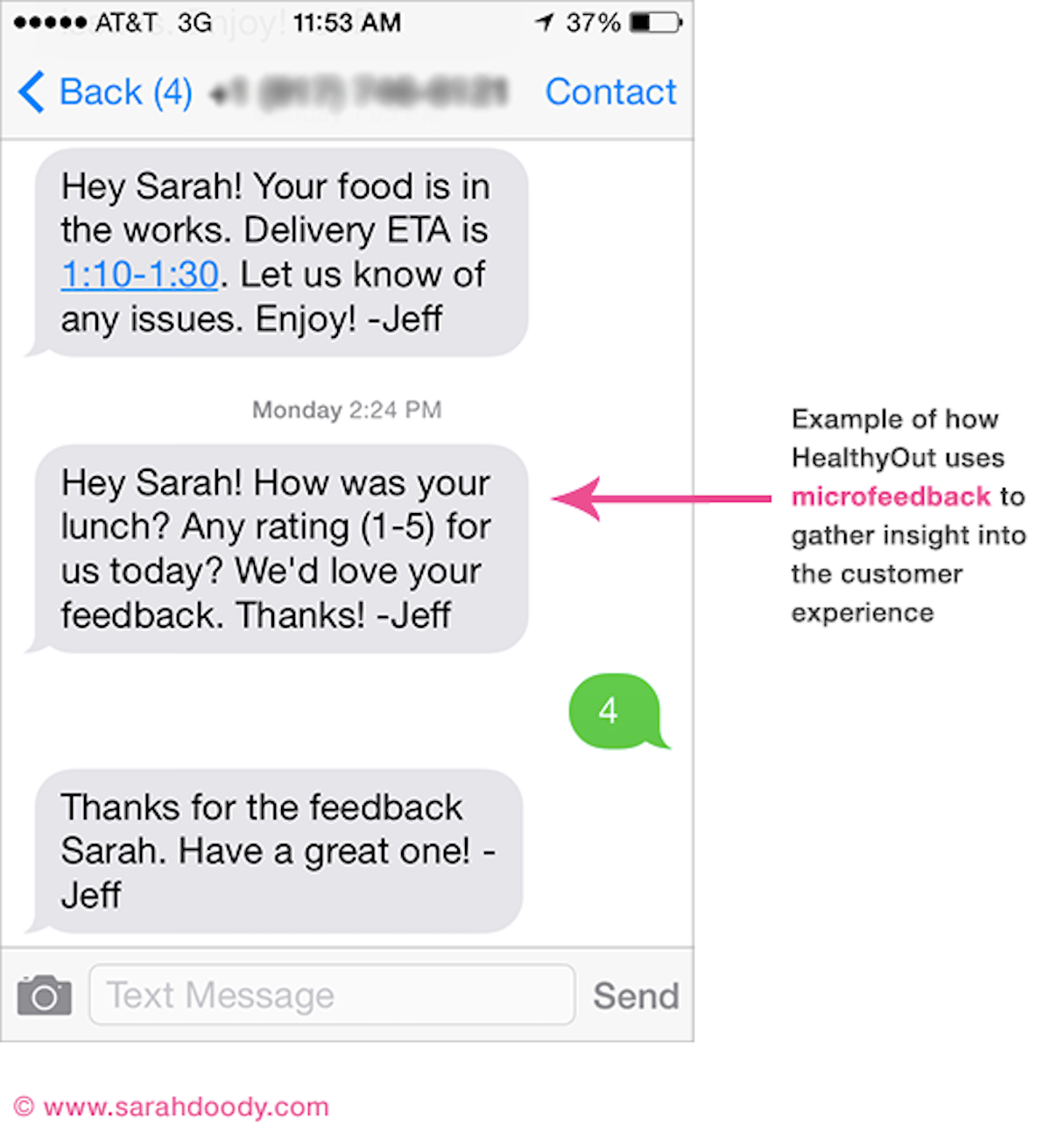
2. Chatbot AI
Chatbots are relatively new to the market, but Gareth Dunlop, CEO and founder of user experience consultancy Fathom, points to a prediction by Gartner, forecasting that 25 percent of customer support and services will be integrated with virtual assistants by 2020.
“Customers want prompt and accurate answers to their questions,” adds Kelly Vaughn, founder of The Taproom Agency, “and in busy times, ecommerce merchants are not always able to keep up with the rate of messages coming in. Thankfully, chatbots are getting smarter, and I expect to see this trend to continue upward.”
Kelly explains that machine learning allows these tools to get a better understanding of which questions are being asked most frequently. They can parse customer data to personalize the support experience to the specific customer.
“Advice is probably obvious here—if you’re not using a chatbot on your online store, give one a test run!”
3. Explosion of AR
Augmented reality is going to explode in popularity this year, believes Piers Thorogood, co-founder and lead designer at design-focused ecommerce agency WeMakeWebsites.
“With tools like 'Shopify AR powered by 3D Warehouse' and a growing number of 3D modelling experts, it's become extremely easy to integrate AR into ecommerce stores,” he explains. “For consumers, this means a much richer buying experience, allowing them to 'test out' homeware products within their homes and 'try on' clothes and accessories. For merchants, this means higher conversion rates and fewer returns. We're expecting several of our clients to be experimenting with this over the next 12 months.”
Ben Froedge, head of content and marketing at Shopify Plus Partners Underwaterpistol, adds that AR is filling the most difficult gap to bridge when comparing the shopping experience between brick-and-mortar and online.
“Being able to physically see what you’re planning to purchase from the comfort of your own home is going to be a gamer changer,” he enthuses. “In 2018 tech giants like Samsung and Apple made it possible to implement AR on a large scale. Now the ecommerce world is combining hardware with applications like 3D Warehouse to make AR-guided shopping a reality for online customers.It won’t be long before augmented reality becomes a part of everyday life.”

4. Video
As consumers around the world spend more time watching video content, we will see it expand boundaries in ecommerce as well.
“Video presents the product more personally, while engaging the customer,” explains Jihyeon Kim, UX designer at Space Squirrel. “Go further than promotional videos on the main page, and prominently show well-produced features on the product page, along with influencer content and related products, and you will drive more conversions.”
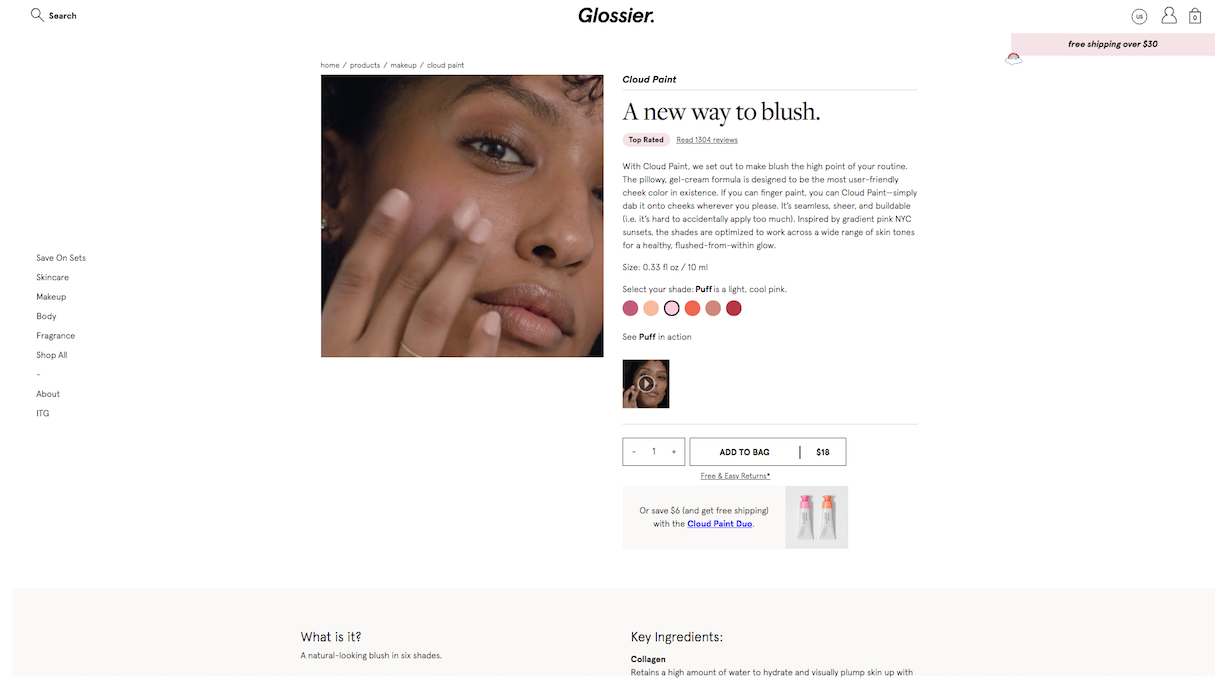
5. Voice search
Just over 20 percent of search queries are made via voice now, and experts are predicting 50 percent of search to be done via voice by 2020.
Kelly Vaughn emphasizes that it’s a huge opportunity for ecommerce, as customers are making more and more purchases from an Alexa or Google Home device.
To improve voice experiences, Kelly advises to concentrate on long-tail keywords.
“Voice search queries are generally longer than typed search,” she highlights. “This is a good opportunity to optimize your product descriptions as well. As voice devices can read out your product’s descriptions, you’ll want your descriptions to shine in their best light. Be descriptive but succinct.”
6. On-site personalization
According to Accenture, 43 percent of current consumers prefer companies that personalize their experience.
“The merchants that will see the most significant growth in their conversion rates will be those who invest in on-site personalization,” predicts Kurt Elster, a senior ecommerce consultant, Shopify Plus Partner, and host of The Unofficial Shopify Podcast.
“It's time we took all the data we've been collecting on customers and put it to work with dynamic websites personalized for each user. New tools from Klaviyo, RightMessage, and others have made personalization more accessible than ever. Soon we'll start looking to design websites that people can spend as little time on as possible as we face pressure to provide dramatically increased convenience in the face of Amazon's chokehold on web sales.”
Piers Thorogood agrees, and states that personalized product recommendations are now commonplace on ecommerce websites.
“'You might also like’ and 'why not try' sections are a must for almost any store,” he emphasizes. “What's more interesting—and something we're seeing a lot more of—is content personalization: customizing the content visitors see based on their behavior.”
Piers recommends an on-site content personalization tool by Nosto, which allows merchants to easily segment visitors based on what they've clicked on.
“Take a sportswear website, for example: if a user has been browsing the Nike category, then the next time they visit the homepage, it can be totally transformed to show promos on new Nike collections, offers on Nike products, and Nike-sponsored athletes. Powerful stuff.”
7. Personalized products
Related to on-site personalization are personalized products, and WeMakeWebsites’ Piers Thorogood points out that brands like Spoke, Son of a Tailor, and Third Love are changing the way we buy clothes by bringing a better-fitting, more personalized approach to fashion.
“At the center of all of them is a fit finder,” he explains, “which is where Shopify Partners come in. More and more brands are requesting this tailored approach to shopping. Whilst there are apps in the app store that go some way to providing this functionality, none of them really cut the mustard, so we typically build bespoke experiences for each client. There's an opportunity here for an app developer to swoop in and build a flexible, easily customized fit finder or a product questionnaire app.”

8. Micro markets
Jordan Moore, director of design at commercially-focused digital product studio Dawson Andrews, anticipates two related movements within the digital retail industry to start gaining momentum this year. He calls the first one ‘micro marketplaces’: opportunities to buy products outside of a traditional ecommerce platform.
“We've already seen this on Google and Instagram, who are listing products within search and social experiences,” he explains. “However, I believe we'll see product cards appear in more high-value places, and they'll be a lot smarter than the current approach, which doesn't provide any more utility than an ad or a gateway to a full commerce user flow."
Jordan believes that these ‘micro marketplaces’ will be the catalyst in ushering in new web technology.
9. Web payments
The other trend that Jordan thinks will decentralize and fundamentally change the shape of ecommerce as we know it is an emerging web standard in development by the W3C, which drastically simplifies online payment processes.
“We all know users hate filling in forms, particularly on mobile,” Jordan points out, “and it doesn't really make sense for users who buy different products across different ecommerce experiences to give the same information over and over again. Web Payments will allow browser native UIs for checkout with previously saved data such as address information and card details to be accessed with a few taps via the Payment Request API.”
This will allow users to circumnavigate traditional checkout processes. Jordan explains that it’s light on interactions and creates complementary opportunities for creating micro marketplaces that won't pull users away from their previous task to complete a transaction.
“This decentralization will be a huge victory for consumers and merchants alike,” Jordan adds.
10. Flexible payment options
The lack of flexible payment options is a long-standing hurdle for ecommerce retailers, agrees Ben Froedge of Underwaterpistol.
“While the US and UK are pretty comfortable with paying fully upfront with a credit or debit card, much of the world sees this as a problem,” he warns. “In 2019, expect to see a shift toward more flexible payment options coming in to play. By allowing customers to defer payment or pay in ways that don’t need a credit card, retailers remove a huge friction point in purchasing.”
Ben points to Klarna as one of the leaders in flexible payments for ecommerce and quotes its CEO in saying, ‘We thought, what if you don’t need credit cards on file? You could just extend people credit and allow them to pay later on and really separate buying from paying’”.
“2019 will see smart retailers around the world offering more ways for customers to pay,” Ben concludes.
11. Multi: currency, language, and channel
 Ben Froedge also recommends a multi-approach to serving a worldwide customer base.
Ben Froedge also recommends a multi-approach to serving a worldwide customer base.
“Multi-currency options are getting better and better,” he explains. “Shopify supports merchants who want to offer people familiar payment options in the currencies they are used to, instead of being restricted to the retailers’ local currency and getting hit with conversion rate fees.”
Multi-language stores, meanwhile, allow retailers to localize their sites and make their message accessible and relevant to local audiences without clunky options like Google Translate murdering the true meaning.
Multi-channel, finally, lets sellers put their message and their products in front of customers wherever they are. Instead of forcing customers to come to you, it’s now easier to just come to them.
“With the combination of multi-language and -currency, multi-channel will become a breeze,” Ben predicts. “For those planning to expand their business, it’s time to think global by having ‘multi’ at the core of what they do.”
Fashion and beauty ecommerce specialist Mari Corella agrees: “Globally, China continues to dominate internet sales and the Middle East is gaining share.”
“Online retailers looking to capture sales outside of their own region can go beyond just offering international shipping capabilities by having sites with localized content, regional payment options, and localized fulfillment partners,” Mari advises.
12. Transient brick and mortar
Ross Beyeler, chief operating officer at full service ecommerce solutions agency Trellis, has found that more retailers embrace 'transient brick-and-mortar' in the form of pop-up shops, trade shows, field reps and unique events. Rethinking 'in-store' therefore has become critical.
“Fixed registers, permanent inventory storage, and retail build-outs are swapped for mobile devices, third-party fulfillment, and pop-up collateral,” he explains.
“Merchants will need to embrace more flexible technology and delivery solutions such as mobile card readers, POS-enabled tablets, on-site/on-demand printing, and flexible leasing on spaces.”
Fathom’s Gareth Dunlop also highlights that 82 percent of mobile users search for local stores to buy any product. He therefore expects research online and purchase offline to grow significantly in 2019.
13. Subscriptions
The combination of subscriptions and bundling products is set to be a huge trend for 2019, anticipates Underwaterpistol’s Ben Froedge, pointing to a few interesting McKinsey stats:
- The subscription ecommerce market has grown 500 percent in the past five years
- Subscription ecommerce generated over $2.6 billion for large retailers in 2016
- The average subscriber’s income sits between $50,000 and $100,000 per year, which means they have large amounts of disposable income
“It’s getting easier than ever for smaller retailers to offer the same level of convenience as an industry giant,” Ben explains. “With options like ReCharge Payments and Bundle Builder, reduced churn and long customer lifetimes have become an easy-to-achieve reality.”
14. The D2C revolution continues
Direct-to-consumer brands are taking over and WeMakeWebsites’ Piers Thorogood doesn’t see this slowing down in 2019.
“I'd expect to see some massive new D2C brands created over the next year, particularly in verticals that haven't seem much disruption,” he predicts.
“If you want to see the perfect model for this, look no further than Hims. And it's not just start-ups taking this route—the big multi-nationals are all launching D2C brands to try and take a piece of the action.”
15. Faster, leaner ecommerce operations
Dan Conboy, managing director of Shopify Plus Partner agency Statement, states that Shopify and Shopify Plus have paved the way for faster, leaner, rapidly growing ecommerce businesses over recent years, a trend that’s only set to continue in 2019.
“We’re now heading towards the last full year of support for Magento 1,” he explains, “and we’re even seeing more and more brands moving away from more complex and costly solutions, including Magento 2, in favour of leaner, more scalable platforms such as Shopify.”
Fast growing ecommerce brands want greater control, better efficiency, and less reliance on developers, according to Dan.
“Add in the power of tools like Shopify Flow and Launchpad for process automation, and the result is an ecommerce landscape increasingly filled with brands better optimized to grow quickly than ever before.”
16. Environmental impact
Consumers are becoming more aware of the environmental impact of online shopping, particularly around packaging, fashion and beauty ecommerce specialist Mari Corella has found.
“Consumers are noticing when boxes are too large or an excessive amount of packaging is used,” she warns. “Efficient packaging labeled with marketing messages around a company’s efforts on waste reduction and reuse is key to winning over consumer consciousness.”
Read more
- How to Add a Social Media Marketing Icon to Your Theme
- Like Moths to a Flame: How to Attract (and Keep) Your Dream Clients
- This is What Happens When Dribbble + Shopify Team Up in Toronto
- Tips for Offering Product Unboxing Consultation Services to Your Clients
- Conquering Our Caffeine Addiction: 8 Surprising Substitutes for Coffee
- 8 Beautifully Designed Ecommerce Stores to Inspire Your Valentine’s Day
- Back to School Gifts for Programmers and Developers
- 7 Beautifully Designed Apps to Inspire You Over the Holidays
- 3 Essential Content Marketing Trends To Watch In 2022

